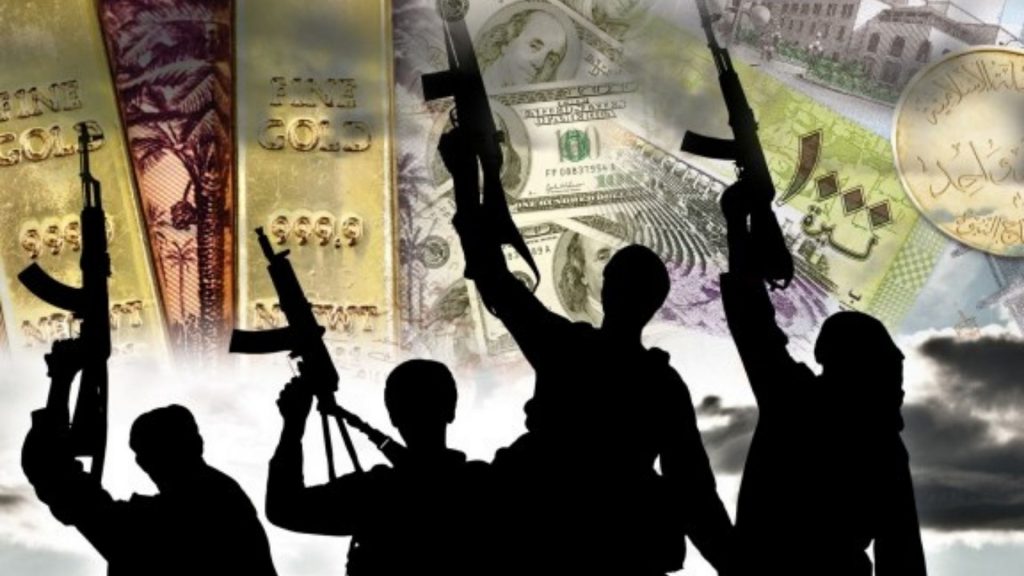Tipologías y tendencias de la financiación del terrorismo. Tras los atentados del 11 de septiembre, las autoridades de Estados Unidos persiguieron a los financiadores del ataque terrorista, especialmente a los que utilizaron organizaciones benéficas y canales de dinero no autorizados.

Tipologías y tendencias de la financiación del terrorismo
Estas fueron las principales rutas que utilizó Al Qaeda para transferir fondos por todo el mundo para financiar el ataque del 11-S. Con el tiempo, los grupos terroristas cambiaron su táctica, pasando de entrenar y financiar una red global de operativos centrados exclusivamente en atentados multifacéticos a depender de individuos autorradicalizados, ya que este último enfoque llevaba a cabo atentados de bajo coste y poco sofisticados, pero letales, utilizando armas de fuego, automóviles y cuchillos.
En Estados Unidos, las autoridades han identificado a individuos dentro de ese país que recaudan grandes cantidades de fondos y envían el dinero al extranjero para apoyar a terroristas y actos criminales de violencia. A la mayoría de los extremistas autóctonos se les lava el cerebro y se les radicaliza a través de Internet. Sin embargo, en comparación con los grupos terroristas, sus actos de violencia tienen una huella financiera limitada.
En la actualidad, la mayoría de los grupos terroristas utilizan el dinero en efectivo o el sistema financiero tradicional para transferir fondos. Son pocos los que dependen de pequeñas donaciones realizadas a través de activos digitales o plataformas en línea. La aparición de actividades terroristas nacionales que se autofinancian o que dependen de una financiación financiera diferente de la de los grupos terroristas yihadistas radicales complica aún más el panorama.
Extremistas violentos
Los extremistas violentos están motivados por toda una serie de ideologías, como el odio étnico, racial, antiautoritario o antigubernamental. En los últimos años, más muertes han sido causadas por elementos nacionales que por terroristas internacionales o extranjeros.
Mientras que los delincuentes únicos que respaldan una o varias ideologías se autofinancian y llevan a cabo los atentados, otras organizaciones de extremistas violentos trabajan de forma más organizada recaudando fondos mediante actividades delictivas como la venta de parafernalia.
Con el aumento de las amenazas terroristas en todo el mundo durante las últimas décadas y los cambios simultáneos en las tipologías de financiación del terrorismo, el Consejo de Seguridad de las Naciones Unidas (o CSNU) adoptó nuevas resoluciones, principalmente en el marco del Capítulo VII, para abordar las nuevas rutas de financiación del terrorismo.
Lucha contra la financiación del terrorismo
Para obtener resultados reales, los esfuerzos para combatir la financiación del terrorismo deben basarse más en una mayor coordinación entre los sectores público y privado y en el intercambio de información financiera entre los países. Además, tanto las entidades del sector privado, como los bancos, como los reguladores financieros del sector público manejan información vital que, si se comparte a tiempo, podría reforzar los esfuerzos realizados para combatir la financiación del terrorismo.
Para que las sanciones financieras selectivas y las medidas obligatorias previstas por el Grupo de Acción Financiera Internacional (o GAFI) sean más eficaces, es esencial que exista una estrecha cooperación entre el sector público y el privado, apoyada en la identificación de tipologías y la evaluación de riesgos, y que se mejore el intercambio de información. La adhesión a las normas internacionales de derechos humanos y el seguimiento del debido proceso también son esenciales.
Reflexiones finales
El panorama de la financiación del terrorismo ha cambiado drásticamente en la última década. Debido a la proliferación de espacios no gobernados o subgobernados, las organizaciones terroristas han podido explotar las poblaciones y los recursos locales para apoyar sus operaciones. Esto, combinado con una tendencia hacia actores solitarios autorradicalizados e individuos autofinanciados o pequeñas células, ha dado lugar a una tendencia discernible hacia la financiación terrorista localizada, o financiación in situ. En consecuencia, algunos cuestionan la eficacia de los instrumentos tradicionales de lucha contra la financiación del terrorismo (CFT).
Estas críticas suelen centrarse en la ineficacia de las sanciones financieras contra las organizaciones terroristas que controlan el territorio, así como en la dificultad que tienen las instituciones financieras para identificar y señalar las transacciones relacionadas con el terrorismo. Sin embargo, es falsa la idea de que los esfuerzos de lucha contra la financiación del terrorismo se centran principalmente en el seguimiento de los movimientos de fondos a través de las cuentas bancarias y en la investigación de las denuncias de actividades sospechosas. Más bien, la CFT abarca amplios esfuerzos estratégicos para proteger la integridad del sistema financiero de la explotación a través del establecimiento de normas y la divulgación diplomática, así como la identificación de amenazas y tipologías emergentes y la cooperación internacional.








